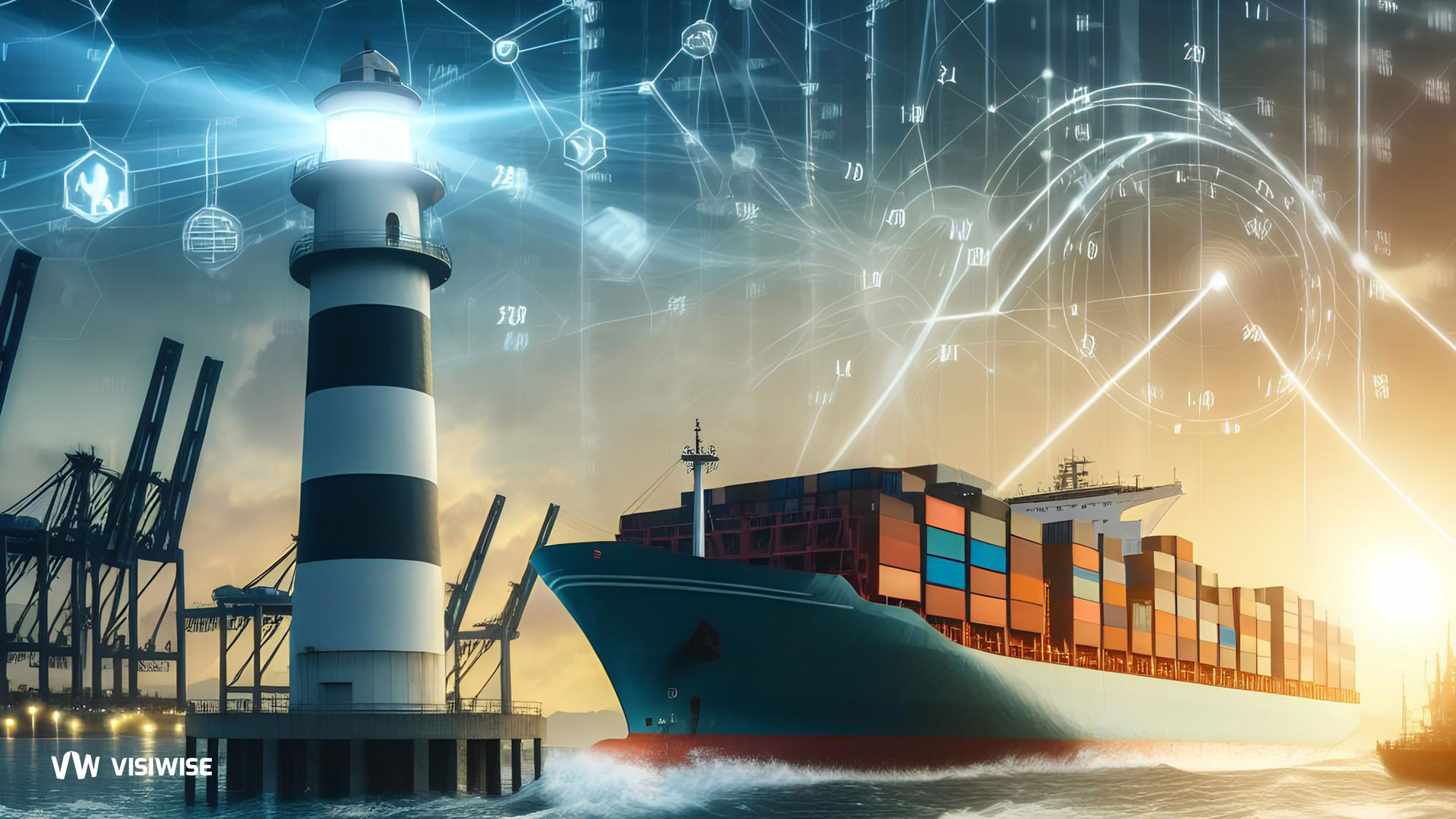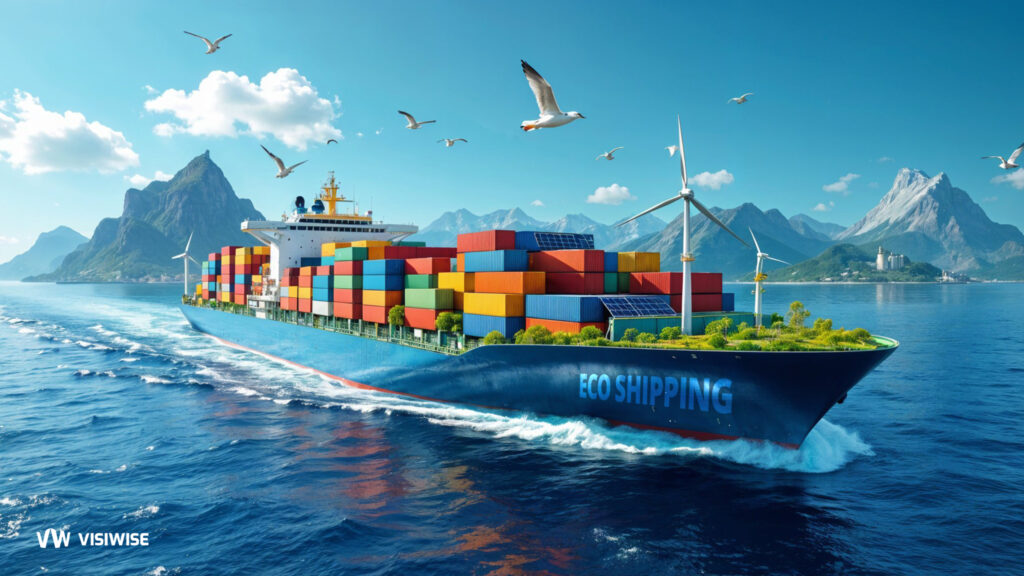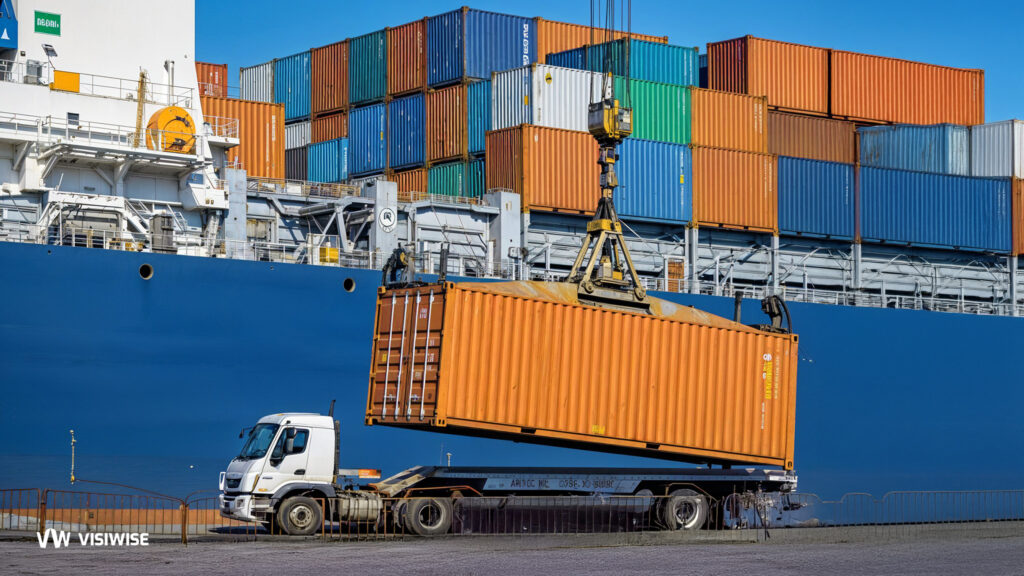In today’s interconnected world, the shipping industry plays a crucial role in global trade and commerce. With thousands of vessels traversing the world’s oceans every day, keeping track of their movements is essential for various stakeholders, including shippers, port authorities, maritime insurers, and maritime enthusiasts. Fortunately, advancements in technology have made vessel tracking more accessible than ever before. In this comprehensive guide, we’ll explore the various methods and tools available for tracking vessels, including containerships, and delve into the benefits and applications of vessel tracking in the maritime industry.
Understanding Vessel Tracking
Vessel tracking involves monitoring the real-time or historical positions and movements of ships at sea. This process relies on a combination of satellite, terrestrial, and AIS (Automatic Identification System) technology. AIS, in particular, is a critical component of vessel tracking, as it allows ships to broadcast their identity, position, course, and speed to other vessels and shore-based stations. This data is then collected and disseminated by various tracking platforms and websites, enabling users to visualize and analyze vessel movements on interactive maps.
Containership Tracking: Importance and Challenges
Containerships are the workhorses of global trade, transporting goods ranging from electronics to automobiles across vast distances. Tracking these vessels is essential for cargo owners, freight forwarders, and logistics companies to monitor the status and ETA (Estimated Time of Arrival) of their shipments. However, tracking containerships presents unique challenges due to their large numbers, diverse routes, and frequent port calls. Effective containership tracking requires reliable data sources, advanced algorithms for route prediction, and seamless integration with supply chain management systems.
The Role of Marine Tracker Websites
Marine tracker websites serve as centralized platforms for accessing vessel tracking data and information. These websites aggregate data from multiple sources, including AIS, satellite imagery, and port authorities, to provide users with comprehensive insights into maritime traffic worldwide. Users can search for specific vessels, view their current positions and trajectories, and access additional details such as vessel specifications, ownership, and historical track records. Marine tracker websites cater to a diverse audience, including maritime professionals, researchers, and enthusiasts, offering customizable features and subscription options to meet individual needs.
Navigating the Ship Tracker Landscape
Ship tracker applications and software solutions offer users a more interactive and customizable approach to vessel tracking. These tools leverage advanced mapping technology and data visualization techniques to provide users with real-time updates on vessel positions, routes, and conditions. Ship tracker applications are available for various platforms, including web browsers, smartphones, and tablets, allowing users to track vessels on the go. Some ship tracker apps offer additional features such as weather overlays, fleet management tools, and alerts for vessel arrivals and departures, enhancing their utility for maritime stakeholders.
Vessel Finder: An Overview
Vessel Finder is one of the leading marine tracking platforms, offering users a comprehensive suite of tools and features for tracking vessels worldwide. The Vessel Finder website and mobile app provide real-time AIS data, live vessel positions, and interactive maps with detailed vessel information. Users can search for specific vessels by name, IMO number, or MMSI, and track their movements in near real-time. Vessel Finder also offers premium subscription options for users seeking advanced features such as historical track data, fleet monitoring, and customized alerts.
Applications of Vessel Tracking
The ability to track vessels in real-time has numerous applications across various sectors of the maritime industry. For shipowners and operators, vessel tracking enables fleet management, route optimization, and operational efficiency. Port authorities use vessel tracking data to manage vessel traffic, monitor safety and security, and plan port infrastructure investments. Maritime insurers leverage vessel tracking to assess risk, monitor insured vessels, and investigate maritime incidents. Additionally, vessel tracking data is invaluable for maritime research, environmental monitoring, and search and rescue operations.
Vessel Route: Navigating the Maritime Journey
Vessel routing encompasses the planning, execution, and monitoring of the path taken by ships as they traverse the world’s oceans and waterways. It involves careful consideration of factors such as weather conditions, navigational hazards, port schedules, and fuel consumption to ensure safe and efficient maritime operations. Let’s explore a summary of vessel routing and its significance in maritime logistics.
Planning the Route
The vessel route begins with meticulous planning, taking into account various factors that can impact the voyage. Route planning involves assessing weather forecasts, sea conditions, currents, and potential hazards such as shallow waters, reefs, or icebergs. Mariners use navigational charts, electronic navigation systems, and weather routing services to chart the optimal course for the voyage.
Executing the Journey
Once the route is planned, the vessel sets sail, embarking on its journey across the seas. During the voyage, the crew closely monitors the vessel’s position, course, and speed to ensure it stays on track and navigates safely through any obstacles or adverse conditions encountered along the way. Continuous communication with maritime authorities, port authorities, and other vessels helps maintain situational awareness and mitigate risks during the journey.
Monitoring and Adjusting
Throughout the voyage, vessel routing involves continuous monitoring and adjustment of the route based on real-time information and changing conditions. Mariners utilize advanced navigation technologies, satellite communications, and onboard sensors to track the vessel’s progress, assess environmental conditions, and make informed decisions to optimize the route for safety, efficiency, and timely arrival at the destination port.
Significance of Vessel Routing
Efficient vessel routing is critical for several reasons:
- Safety: Proper route planning and navigation help mitigate the risk of accidents, collisions, and groundings, ensuring the safety of the vessel, crew, and cargo.
- Efficiency: Optimal routing minimizes fuel consumption, voyage duration, and operating costs, maximizing the efficiency of maritime transportation and reducing environmental impact.
- Timeliness: Well-planned routes enable vessels to adhere to schedules, meet delivery deadlines, and maintain reliable supply chains for goods and commodities transported by sea.
- Compliance: Vessel routing takes into account international regulations, maritime laws, and safety protocols to ensure compliance with navigational standards and prevent violations that could lead to penalties or sanctions.
Container Tracking vs. Vessel Tracking: Navigating Maritime Logistics
Within maritime logistics, two fundamental components play pivotal roles: container tracking and vessel tracking. Though interconnected, each fulfills a unique function in facilitating the seamless movement of goods worldwide. Let’s explore the disparities and significance of both container tracking and vessel tracking within the broader context of the global shipping sector.
Understanding Container Tracking
Container tracking revolves around monitoring the movement and location of individual shipping containers throughout their journey. These containers, typically standardized in size and shape, carry goods of various types, from consumer electronics to raw materials. Container tracking provides real-time information about the status, location, and condition of each container, offering invaluable insights into the logistics chain.
The Importance of Container Tracking
Container tracking plays a crucial role in supply chain management, offering several benefits:
- Inventory Management: By tracking containers, businesses can maintain accurate inventory records and monitor the movement of goods from origin to destination.
- Efficient Operations: Container tracking enables companies to optimize transportation routes, reduce transit times, and minimize the risk of delays or disruptions.
- Asset Protection: Monitoring container movements helps mitigate the risk of theft, loss, or damage, ensuring the safe and secure delivery of goods.
Customer Satisfaction: With real-time tracking capabilities, businesses can provide customers with accurate delivery estimates and enhance overall service quality.
Exploring Vessel Tracking
Vessel tracking, on the other hand, focuses on monitoring the movement and location of entire ships or vessels. This includes cargo ships, container vessels, bulk carriers, tankers, and other types of maritime vessels. Vessel tracking provides valuable insights into vessel positions, routes, speeds, and conditions, enabling stakeholders to monitor maritime traffic and optimize fleet management.
The Significance of Vessel Tracking
Vessel tracking offers several advantages for maritime operations:
- Safety and Security: By tracking vessels in real-time, authorities can enhance maritime security, monitor vessel movements in restricted areas, and respond promptly to emergencies or incidents at sea.
- Efficient Fleet Management: Shipowners and operators can use vessel tracking data to optimize fleet deployment, plan routes, and manage fuel consumption, leading to cost savings and improved operational efficiency.
- Compliance and Regulations: Vessel tracking helps ensure compliance with international maritime regulations, such as the International Maritime Organization’s (IMO) regulations on vessel safety, pollution prevention, and navigation.
Environmental Monitoring: Tracking vessel movements enables environmental agencies to monitor vessel emissions, assess the impact of maritime activities on marine ecosystems, and implement measures to protect the environment.
both container tracking and vessel tracking are essential components of maritime logistics, offering unique insights and benefits to stakeholders across the supply chain. While container tracking focuses on individual cargo units, vessel tracking provides a broader view of maritime traffic and fleet operations. By leveraging the capabilities of both container and vessel tracking technologies, businesses and authorities can optimize logistics processes, enhance safety and security, and ensure the efficient movement of goods and vessels on a global scale.
Best Practices for Effective Vessel Tracking
While vessel tracking technology has made significant advancements in recent years, there are still best practices that users should follow to ensure accurate and reliable tracking results. These include verifying data sources, cross-referencing information from multiple platforms, and understanding the limitations of AIS technology, such as signal range and data latency. Additionally, leveraging a visibility platform that combines data from various tracking platforms can enhance tracking efficiency and reliability. Users should also stay informed about updates and improvements to vessel tracking systems and seek training or support as needed to maximize the utility of tracking tools.
Tracking Vessels with a Visibility Platform
Utilizing a visibility platform for vessel tracking offers a streamlined approach to monitoring maritime activities. Here’s a brief overview of how to track vessels using a visibility platform:
- Access the Platform: Log in to the visibility platform provided by your chosen service provider. Ensure you have the necessary credentials to access the platform’s features.
- Search for Vessels: Use the search functionality within the platform to look for specific vessels by name, IMO number, MMSI number, or other identifiers.
- View Vessel Details: Once you’ve located the vessel of interest, access its details to see information such as current position, speed, course, destination, and other relevant data.
- Monitor in Real-Time: Utilize the platform’s real-time tracking capabilities to monitor the vessel’s movements as it navigates its route. Updates are provided continuously to ensure accurate tracking.
- Set Alerts and Notifications: Take advantage of the platform’s alerting system to receive notifications about significant events related to the vessel, such as arrival at a port, departure, deviations from the planned route, or changes in status.
- Analyze Historical Data: Explore the platform’s historical tracking data to review past voyages, routes taken, and performance metrics. This information can provide valuable insights for trend analysis and decision-making.
- Customize Views and Reports: Tailor the platform’s interface to suit your specific needs by customizing views, creating reports, and setting preferences for display options.
By leveraging a visibility platform for vessel tracking, you can gain valuable insights into maritime activities, improve operational efficiency, and make informed decisions based on real-time and historical data.
Introduction to Visiwise: Your Comprehensive Guide to Vessel Tracking
With Visiwise, navigating the complex world of vessel tracking becomes seamless and efficient. Our platform offers a comprehensive guide to monitoring shipping movements accurately, ensuring timely deliveries, and optimizing operational efficiency. Whether you’re a seasoned maritime professional or a curious enthusiast, Visiwise provides the tools and resources you need to stay informed and empowered in the maritime industry.
Visiwise: A User-Friendly Approach to Vessel Tracking
Visiwise takes pride in offering a user-friendly interface that simplifies the process of vessel tracking. Our intuitive platform allows users to access real-time data on vessel positions, routes, and conditions with ease. Whether you’re tracking a containership, bulk carrier, or tanker, Visiwise provides the insights you need to make informed decisions and stay ahead of the curve in the dynamic world of maritime logistics.
Key Features of Visiwise for Vessel Tracking
Visiwise offers a wide range of features designed to enhance the vessel tracking experience for users. From interactive maps and customizable alerts to historical track data and fleet monitoring tools, Visiwise has everything you need to monitor shipping movements effectively. Our platform also offers premium subscription options for users seeking advanced features and personalized support from our team of maritime experts.
Benefits of Using Visiwise for Vessel Tracking
By utilizing Visiwise for vessel tracking, users can unlock a host of benefits that contribute to operational efficiency and success in the maritime industry. Whether you’re a shipowner, port operator, or logistics manager, Visiwise empowers you to optimize fleet management, streamline route planning, and mitigate risks effectively. With Visiwise, you can make data-driven decisions that drive results and propel your business forward in the competitive maritime landscape.
Getting Started with Visiwise: A Step-by-Step Guide
Ready to harness the power of Visiwise for vessel tracking? Getting started is easy! Simply create an account on our platform, explore our range of features and tools, and start tracking vessels in real-time. Our user-friendly interface and comprehensive tutorials ensure that you can navigate Visiwise with confidence, maximizing the value of our platform for your maritime needs.
Final Thoughts
vessel tracking technology has become indispensable for the maritime industry. From ensuring the timely delivery of goods to optimizing fleet management, tracking vessels in real-time offers numerous benefits for stakeholders across sectors. With advancements in technology and the availability of platforms like Visiwise, accessing accurate vessel tracking data has never been easier. By embracing these tools and best practices, stakeholders can enhance safety, efficiency, and compliance within the maritime industry, paving the way for a more connected and efficient future.



